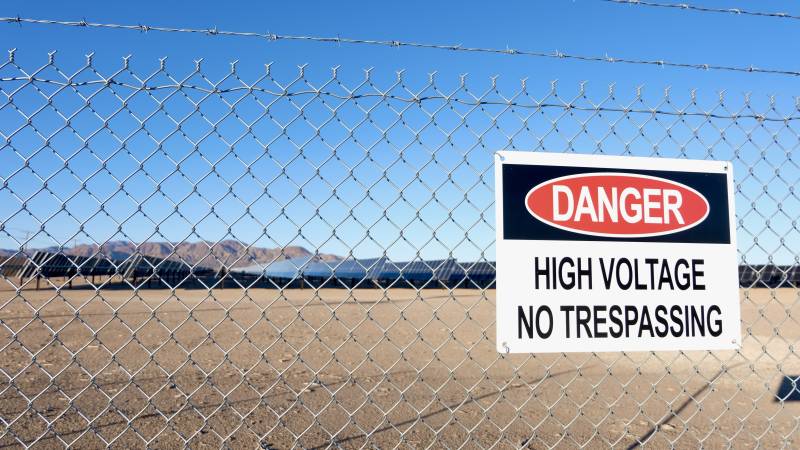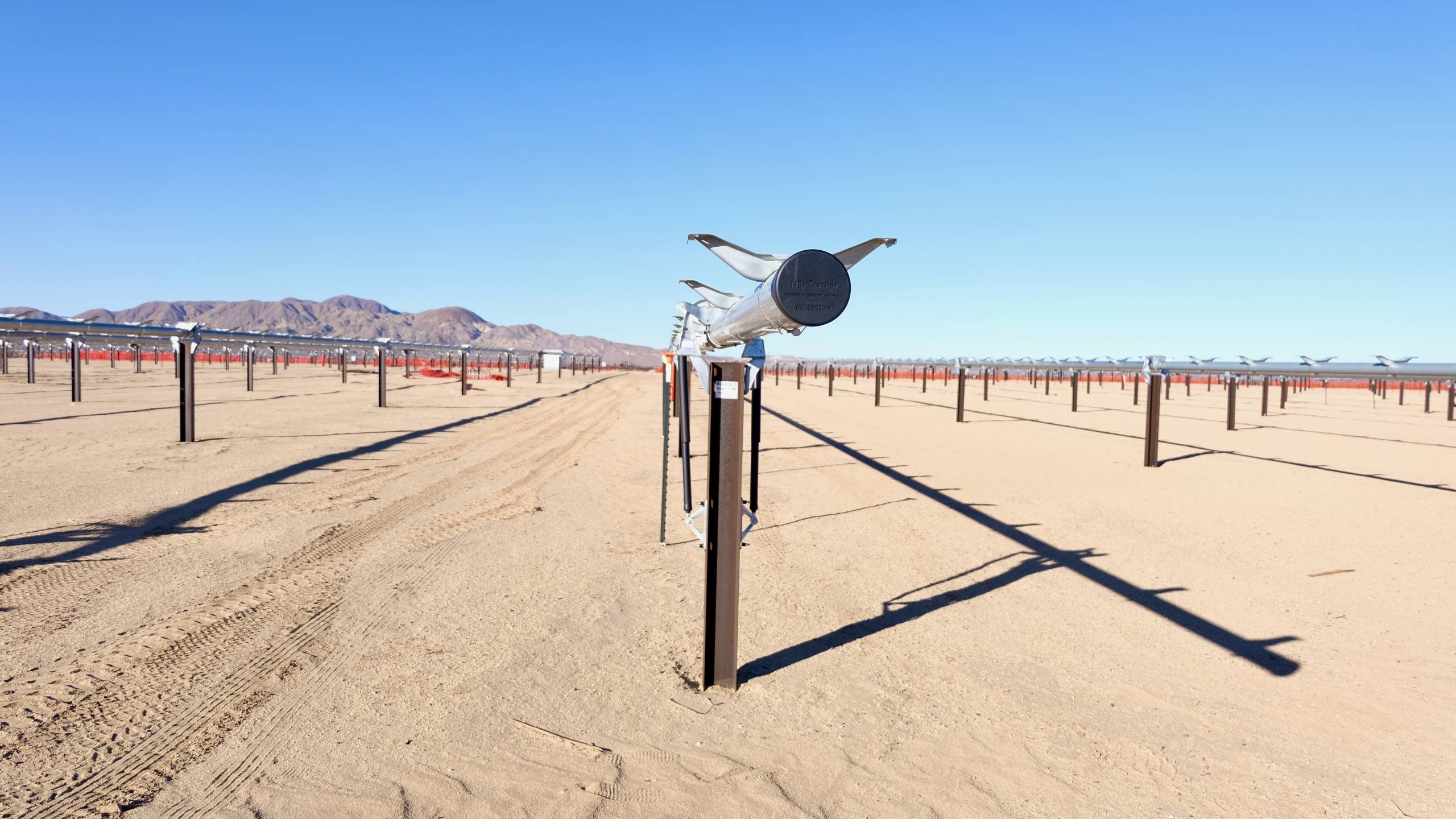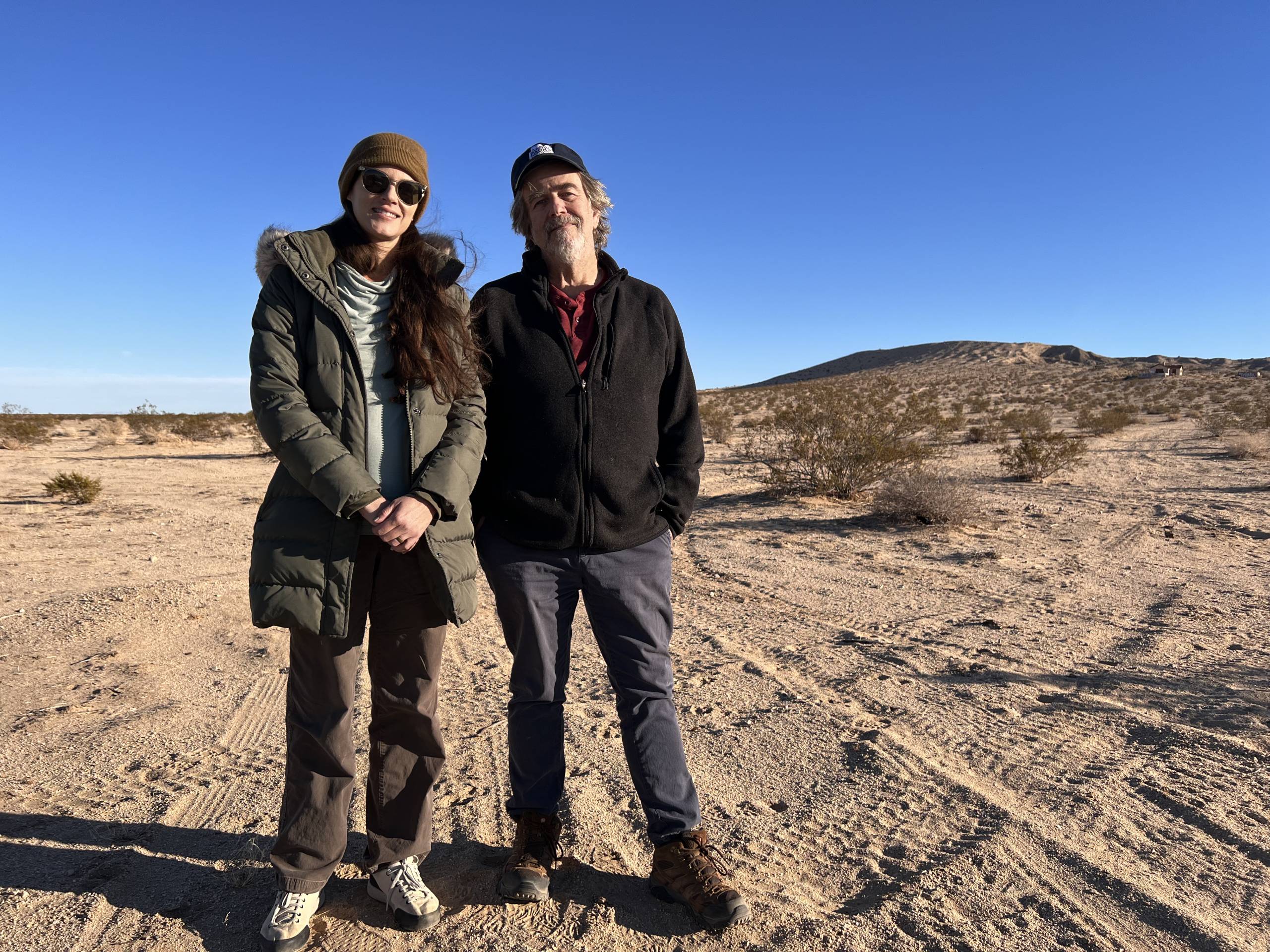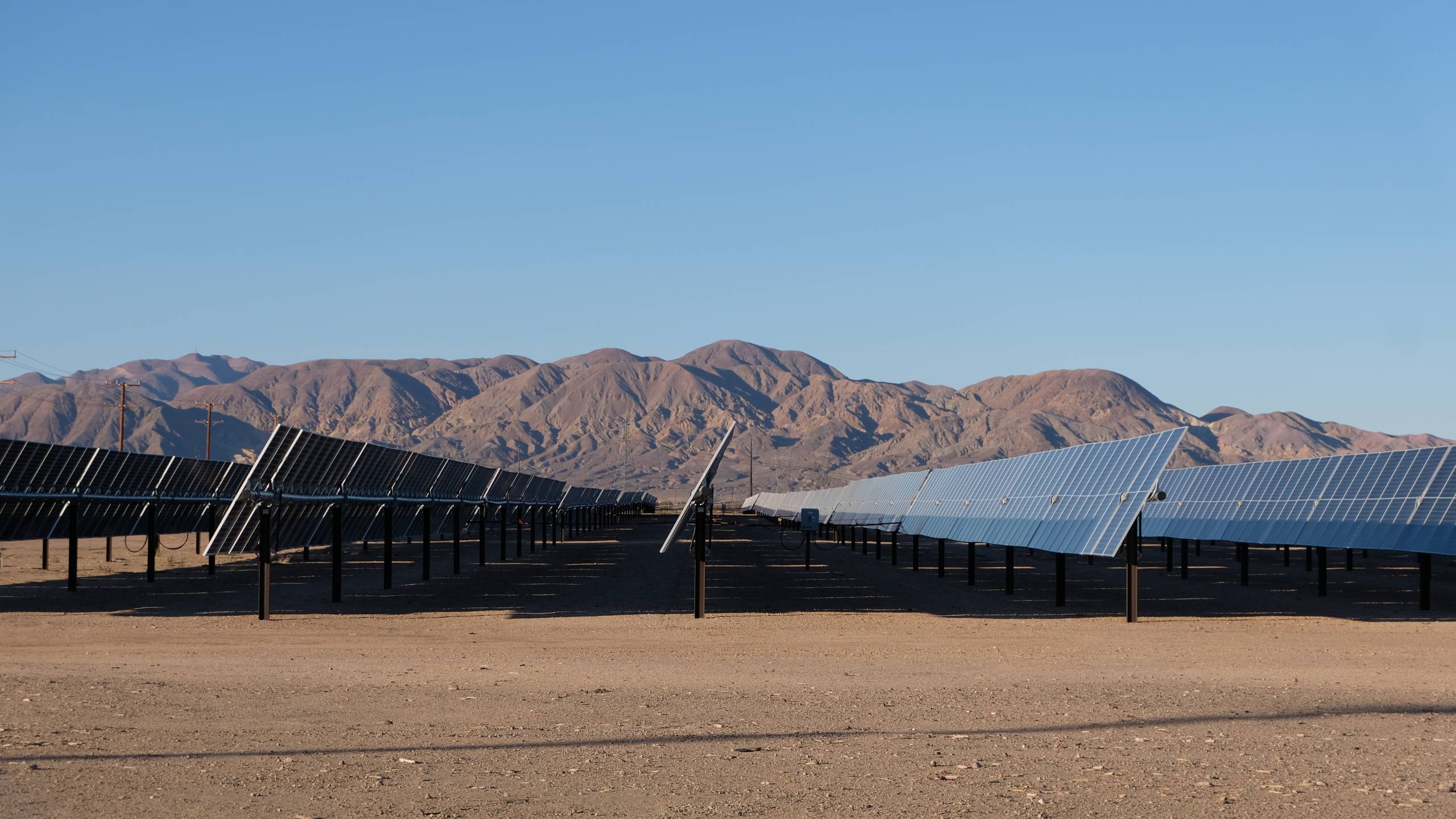On a swath of federal desert land about an hour’s drive east of Palm Springs, construction workers drive row after row of big metal posts into the desert floor. These posts will soon be topped by thousands of solar panels. When construction is finished, the solar power project at Victory Pass will have a footprint of about 3,000 acres — that’s three times the size of Golden Gate Park. And when it’s connected to California’s energy grid, the facility will generate enough power for more than 130,000 homes, according to Raisa Lee, project developer for San Francisco’s Clearway Energy, which is building the project.
Solar Energy Farms Are Booming in California's Deserts. Here's Why Environmentalists Are Concerned

The green energy boom is accelerating in the deserts of California. It’s a boom that’s been encouraged by the Biden administration, which has streamlined renewable energy development within nearly 11 million acres of federal desert land in seven California counties. Many of those projects are industrial-scale solar facilities built by companies like Clearway.
But as the state’s deserts play a growing part in helping to create the green energy revolution, a backlash is also growing among those who argue that desert wilderness is being sacrificed for renewable power goals.
John Woody, vice president at Clearway Energy, says these huge desert solar projects are necessary if California is going to meet its goal of ending dependence on fossil fuels and fighting climate change.
“California needs to add about 6 gigawatts a year of these renewable energy and storage projects to meet their clean energy goals, 90% by 2035 and 100% by 2045,” said Woody in a recent interview at the company’s Daggett project in San Bernardino County. When it opens late next year, the energy plant will be the largest solar power and battery storage facility in the state, and buyers for power are already lined up.

Still, Woody argues the company’s work is about more than profit: “We’re just doing our small part to help California meet those goals,” he said.
But some environmentalists disagree that such large-scale construction in the desert is necessary.
“There are ways to do this without bulldozing old-growth desert with millennia-old plants, endemic populations of rare organisms, and endangered and threatened species,” said Chris Clarke, associate director of the California Desert Program at the National Parks Conservation Association and the co-host of a podcast about threats to the desert.
Like other environmentalists, Clarke worries about the habitat of endangered animal life, like the desert tortoise, as thousands of acres of desert land are turned into solar power farms. He argues that as California goes all in on solar, the projects should be built on rooftops in coastal cities and suburbs, where most of the power generated will end up anyway, and not hundreds of miles away in the state’s deserts.

“The threat to the desert right now is similar to the threats that other places in North America faced in the 19th century, where people were starting to notice what was there and starting to figure out how they could profit off it,” he said.
Meanwhile, more desert land continues to be prepped for the installation of solar panels, joining solar power facilities that have already been built. Back at Clearway’s Victory Pass solar site, project manager John Moon pointed to the distant desert landscape and all the other solar projects in the area, with names like Desert Sunlight, Desert Harvest and Maverick One. As ground is broken on more projects, the debate will continue over how to balance the goals of creating a renewable energy revolution and protecting the state’s desert lands.

Clearway’s John Woody argues that extraordinary efforts are being taken by both private companies and the government to protect the desert’s ecosystems as solar facilities are built. He also says California’s green power goals are so enormous, it’s impossible to make an “either/or” choice between urban rooftop solar versus desert solar.
“There’s no silver bullet. You can’t do one or the other,” said Woody. “You need to sort of do all of the above.”
